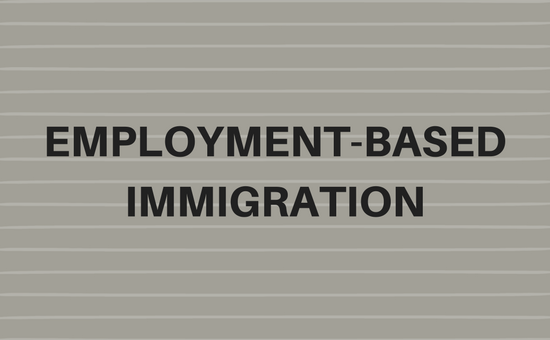Employment-based Green Card sponsorship is a phrase describing the process for an employer to lead an employee (or a to-be employee) from her current immigration status to the status of a permanent resident (Green Card status). (Employers that engage in the employment-based Green Card process should expect the entire process to take anywhere from one year to several years to complete.)
Employment-based Green Card sponsorship usually follows a three-step process:
The first step is that the employer files a PERM application, an application for permanent employment certification, with the Department of Labor.
The PERM application, among other things, summarizes the results of the efforts the employer has made to recruit US workers. The PERM application is meant to, among other things, demonstrate there were no US workers willing, able, qualified, and available to fill the job opportunity offered to the non-citizen employee. The terms PERM and labor certification often are used interchangeably when discussing this process of testing the US labor market. An employer that identifies US workers who are willing, able, qualified, and available to take the job during the recruitment may not file the PERM application. Further, the Labor Department may challenge an employer’s conclusion about the availability or suitability of US workers by denying the employer’s PERM application. Once the Labor Department “certifies” the PERM application, the employer may move on to the next step of the employment-based Green Card sponsorship process.
The second step involves the employer filing an employment-based immigrant visa petition, the I-140 petition, with the United States Citizenship and Immigration Services.
After the second step (or, in certain cases, in conjunction with the second step), it is time for the third step. Here, the non-citizen employee must file an application to either “adjust status” from non-immigrant status to the status of a permanent resident (the status of a Green Card holder), or she must apply for an immigrant visa allowing her to enter the US as a permanent resident.
Skipping the PERM process or any part of the employment-based Green Card sponsorship process will be alluring to an employer; if it can be done, it should be done, the employer may rightly think about skipping time-consuming, spending-required parts of the sponsorship process. In certain circumstances, employers can skip the PERM process. The employer may skip the PERM process when the non-citizen qualifies for the “first preference category” or for a National Interest Waiver. The waiver is available to certain non-citizens who qualify for the “second preference category.” Also, the employer may skip the PERM process when the non-citizen has a particular occupation, a “Schedule A” occupation. Whether the employer may bypass the PERM process depends on the non-citizen’s qualifications. An employer may want to evaluate the availability of alternative options before and even after the employer has started the Green Card sponsorship process.
